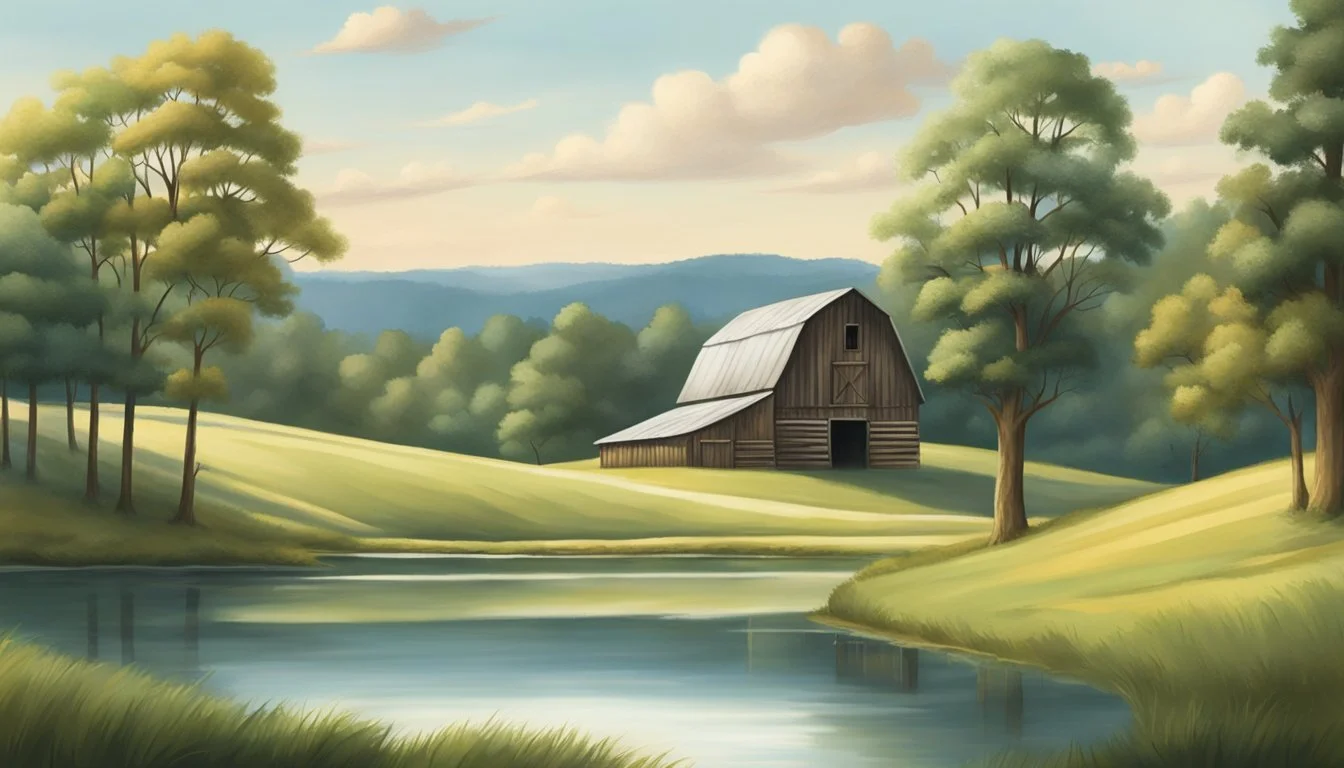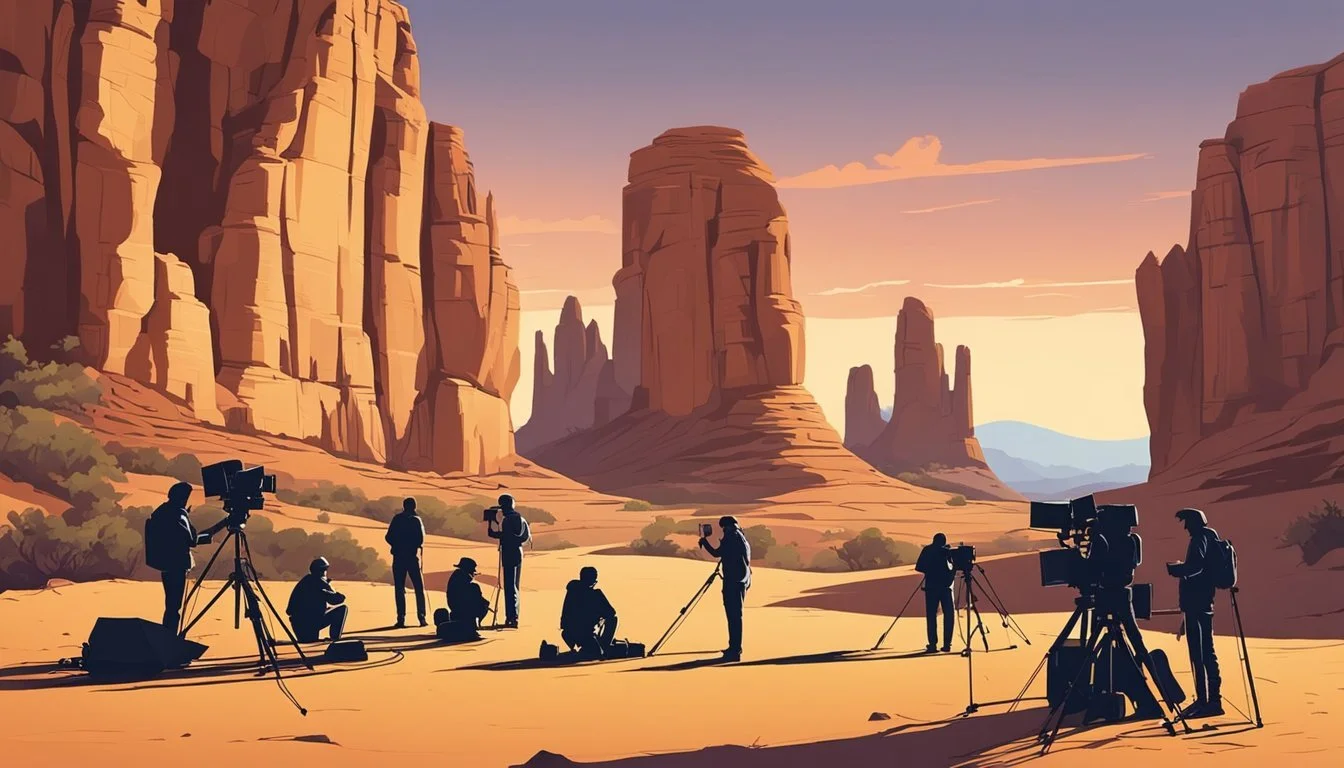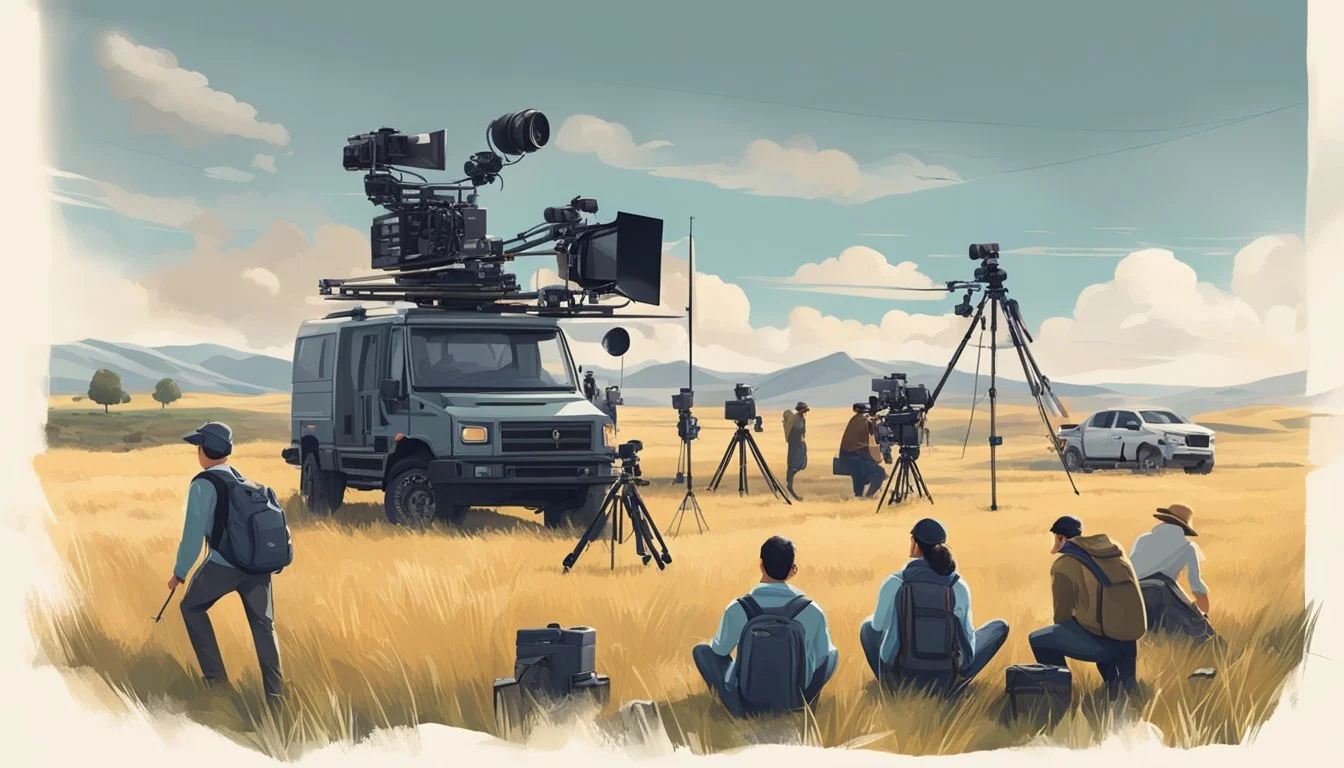Free Land for Film Locations
Discover Unique Backdrops
Finding the perfect film location can be a game-changer for filmmakers looking to elevate their visual storytelling. Securing free land for film locations not only cuts production costs but also provides unique backdrops that can turn ordinary footage into something extraordinary. From city parks to friends' properties, numerous options exist for those daring enough to research and reach out.
Websites such as LocationsHub serve as valuable resources for filmmakers, offering a comprehensive database of location content from various sources worldwide. Alongside this, platforms like FilmLocationsWanted enable owners to list properties specifically for production projects, enhancing the variety of locations available. These tools can be instrumental in discovering those hidden gems that are both free or cheap to use.
Leveraging personal connections also proves valuable. By contacting friends or acquaintances who own appealing locations, filmmakers can often gain access to unique settings without spending a penny. Engaging the local community or government agencies, like the City of Westminster Filming & Events department in London, can also open doors to stunning and natural backdrops, often free of charge.
The Appeal of Los Angeles as a Premier Filming Destination
Los Angeles stands out as a leading destination for filmmakers due to its iconic landmarks, diverse landscapes, and infrastructure tailored to the needs of the film industry. Its comparison to other major cities further highlights its unique advantages.
Iconic Landmarks and Diverse Landscapes
Los Angeles offers a plethora of iconic landmarks, such as the Hollywood Sign, Griffith Observatory, and the Beverly Hills neighborhood. These sites provide instantly recognizable backdrops that add distinctive character to films.
The city's varied landscapes, from the urban sprawl of Downtown Los Angeles to its picturesque beaches and rugged mountains, allow for a wide range of filming environments. It’s possible to shoot desert scenes in the morning and forest scenes in the afternoon, showcasing the area's versatility.
Catering to the Needs of Filmmakers
The infrastructure in Los Angeles is tailored to facilitate film production, with numerous studios, post-production facilities, and a deep pool of experienced talent. The city is home to Hollywood, the historic heart of the movie industry, which offers cutting-edge technology and skilled professionals in every aspect of filmmaking.
Los Angeles provides extensive support services, including location scouts, permitting offices, and catering businesses familiar with the demands of film crews. This level of support ensures efficient and smooth production processes, making it an attractive option for filmmakers.
Los Angeles vs. New York City: A Filming Locations Showdown
When comparing Los Angeles to New York City as filming locations, several factors come into play. While New York City boasts iconic landmarks such as Times Square and Central Park, Los Angeles offers a broader range of environments and more predictable weather, which can be crucial for shooting schedules.
Costs are another consideration. Though both cities can be expensive, Los Angeles often provides more favorable conditions for outdoor and large-scale shoots due to its expansive spaces and accommodating climate. Additionally, the proximity of varied landscapes within a short drive makes Los Angeles particularly appealing for diverse scene requirements.
Identifying Perfect Filming Locations
Finding the perfect filming location requires consideration of several factors, including accessibility, visual appeal, and cost-effectiveness. Professionals often turn to a mix of experts, hidden gems, and residential settings to meet these needs.
The Role of Location Scouts
Location scouts are crucial in identifying suitable places for filming.
They have the expertise to find settings that match the vision of the script. They conduct extensive research and visit various sites to assess their viability for shooting.
Scouts also consider logistical aspects such as accessibility, lighting, and noise levels. For example, picturesque spots like Greystone Mansion are often sought after due to their historic charm and cinematic qualities.
Location scouts can save filmmakers considerable time and resources by leveraging their industry connections to secure permits and negotiate terms.
Hidden Gems Beyond the City
Urban landscapes are often the first choice, but hidden gems beyond city limits offer unique backdrops.
Rural locations, abandoned warehouses, and natural settings like public forests can add depth to the narrative. Locations like Silver Lake provide scenic vistas that are less common in urban environments.
These areas often require less stringent permitting, reducing cost and administrative burden. Creativity in location choice can set a project apart, making the visuals distinctive and memorable.
Scouting lesser-known areas can also reveal settings that have not been overused, providing a fresh look to the production.
Residential Filming Locations: Navigating Privacy and Permits
Residential filming locations come with specific challenges, primarily related to privacy and permits.
Utilizing homes and apartments in areas like the San Fernando Valley requires clear agreements with property owners and neighbors. It's essential to respect privacy and minimize disruptions during filming.
Permits are often needed to legally film in residential areas, and these can vary significantly between municipalities. Clear communication with local authorities ensures all legal requirements are met.
Residential settings can bring an authentic, lived-in feel to scenes, but careful planning and respect for personal space are paramount to avoid conflicts and ensure smooth production.
The Logistics of Utilizing Private Land
Using private land for film locations involves careful planning with regard to securing permissions, addressing property owners’ needs, and managing the budget for location costs.
Securing Permissions and Contracts
Obtaining permissions and contracts is essential when using private land for filming. Film crews need to negotiate terms directly with property owners. Legal contracts should detail the duration of the shoot, areas of access, and any specific restrictions. It is vital to include clauses that address liabilities and insurance coverage.
Film crews usually need to liaise with local authorities to ensure compliance with zoning laws and permits. These permissions help avoid legal complications and ensure a smooth filming process.
Property Owners' Considerations
Property owners’ preferences and concerns must be addressed for a successful agreement. Property owners may have specific requirements such as limits on the number of people on-site, time restrictions, and conditions for restoration after filming.
Understanding and respecting property owners' needs fosters a cooperative relationship. Offering compensation for any discomfort or inconvenience can be beneficial. It’s important to communicate clearly and document all agreed terms in the contract.
Budgeting for Location Costs
Budgeting is another critical aspect, encompassing more than just the rental fee. The film crew must account for possible costs such as security deposits, clean-up fees, and potential damage repairs. Additional expenses include securing local permits and compensating for utilities used during filming.
A detailed budget should allocate funds to cater to unexpected costs. This foresight prevents cost overruns and ensures the project remains financially feasible. Transparent financial planning and budgeting can help maintain trust with property owners and ensure all parties are satisfied with the arrangement.
The Role of Natural Light and Timing in Filming
Natural light can enhance film production by providing authenticity and unique visual effects. Leveraging specific lighting techniques and optimal timings like twilight and dawn can greatly impact the outcome of the scenes.
Capturing Golden Hour: Twilight and Dawn
Golden hour occurs just after sunrise and before sunset, offering a soft, warm light that can create a romantic or nostalgic atmosphere. The quality of light during these times is excellent for highlighting textures and colors, making the visuals more vivid.
Filmmakers often use these periods to capture dramatic shadows and dynamic lighting effects. For instance, golden hour can enhance a romantic scene by casting a warm glow on the characters, making the moment feel more intimate.
Adjusting for Weather and Seasonal Changes
Weather conditions and seasonal variations also play a significant role in natural lighting. Clear skies can provide consistent lighting, but overcast conditions can offer a diffused light that’s softer and more even, reducing harsh shadows.
Seasonal changes affect the angle and duration of the sunlight. For example, winter months may offer shorter windows for capturing natural light. Being aware of these factors allows filmmakers to plan shoots more effectively. Timing shoots around weather forecasts can ensure that the lighting conditions are optimal for the desired scene.
Technical Requirements for Different Types of Productions
Different types of productions necessitate distinct technical requirements, encompassing variations in equipment, crew, and logistical needs.
Film vs. Commercial Shoots: Equipment and Crew Expectations
Films often require an extensive array of equipment and a larger crew. Camera rigs, lighting setups, microphones, and set design elements are typically more sophisticated. Filming locations are chosen with potential for complex setups, demanding generators for power supply, multiple camera angles, and extensive post-production needs.
On the other hand, Commercial shoots usually involve a smaller scale. The equipment might include drones, handheld cameras, and basic lighting kits. The crew is smaller, often limited to essential personnel like a director, a camera operator, and a few assistants. Flexibility in location is also expected, enabling faster setups and minimal disruption to public spaces.
Photography and Music Video Considerations
Photography sessions tend to require minimal equipment compared to films or commercial videos. Key gear includes high-resolution cameras, tripods, portable lighting, and reflectors. Simplicity and mobility are crucial, allowing photographers to adapt quickly to different locations and natural light conditions.
Music videos rest in between films and commercials in terms of requirement complexity. A variety of shooting styles might necessitate specialized cameras, gimbals, and distinctive lighting techniques. The crew often includes a director, choreographer, and visual effect specialists. Unique locations or dynamic backdrops are preferred, enhancing the video's visual appeal without requiring the elaborate setups seen in full-scale movie productions.
Customizing Locations to Fit the Script
Customizing film locations to match the script’s requirements is essential for authenticity and visual appeal. Both outdoor settings and props play a key role in achieving the desired atmosphere.
Adapting Outdoors for an Authentic Look
Outdoor locations provide a customizable canvas for various film genres. Local parks can transform into anything from a serene meeting point to a chaotic chase scene. Using beaches during sunrise or sunset offers natural beauty and tranquility, perfect for romantic or reflective moments.
Exploring public forests can lend a mysterious or adventurous backdrop, while mountain trails offer breathtaking views suitable for journey or revelation scenes. By leveraging natural landscapes, filmmakers can create believable and immersive environments that align with the narrative.
Set Designers and Props: Creating the Desired Ambience
Set designers and props are crucial in tailoring any location to fit the script. Set designers can significantly alter the look and feel of a space, making an ordinary room look like a vintage cafe or high-tech lab. Through strategic placement of props, they can evoke specific time periods, cultures, or moods.
For example, adding vintage furniture and decor can turn a modern office into a 1920s speakeasy. Props like costumes, signage, and specific artifacts further enhance the setting, providing visual cues that support the story’s context. Collaborating closely with set designers ensures that every detail aligns with the script’s vision, making each scene more compelling and realistic.
The Importance of Post-Production in Location Filming
Post-production plays a crucial role in maximizing the impact of film locations by enhancing visual quality and seamlessly integrating computer-generated imagery (CGI) with real-world settings.
Enhancing Images in Editing
Editing is essential for refining the raw footage captured during on-location filming. Editors adjust color grading to match the film's desired mood, making the scenes more visually appealing. They also utilize techniques like rotoscoping and chroma keying to isolate specific elements in the footage for detailed enhancement.
In addition, editing software enables the removal of unwanted elements, such as stray objects or crew members inadvertently entering the shot. This process ensures that all scenes maintain a cohesive visual narrative, critical for keeping viewers immersed in the storyline.
Integrating CGI with Real Backdrops
Integrating CGI with practical locations requires meticulous post-production work to achieve a seamless blend. VFX artists develop digital models and animations that complement the physical environment, paying close attention to matching lighting, shadows, and textures.
This integration often involves motion tracking, where computer-generated elements are synchronized with the movements and angles of the live-action footage. This technique is vital in creating believable interactions between actors and their virtual surroundings, enhancing the overall storytelling and visual experience of the film.
Marketing and Promotion of Filming Locations
Effective marketing and promotion of filming locations can significantly enhance a location's appeal to filmmakers and attract further interest. This section covers successful film location promotions and how famous locations can be leveraged for tourism and brand enhancement.
Case Studies: Successful Film Location Promos
New Zealand: The "Lord of the Rings" trilogy transformed New Zealand into a major tourist destination. Intensive promotional campaigns highlighted the stunning landscapes, resulting in increased tourism and revenue. The nation's unique selling points were effectively captured and broadcast worldwide, making it a sought-after location.
Philadelphia: The "Rocky" steps, made famous by the movie "Rocky," have become iconic. Screen locations were promoted through strategic use of social media and guided tours, attracting visitors who wanted to recreate scenes from the film.
Chicago: The use of Chicago in "The Dark Knight" showcased the city's diverse architecture. Local tourism boards worked with film crews to highlight specific city areas, leveraging the film's popularity to boost tourism and local business engagement.
Leveraging Location Fame for Tourism and Branding
Prominent film locations can be beneficial for attracting tourists and strengthening local brands.
Los Angeles: "La La Land" used various iconic spots in Los Angeles. The film's success drove a renewed interest in these locations, leading to increased footfall and engagement. Businesses and tourism agencies capitalized on this by offering themed tours and merchandise.
Texas: Small towns featured in films often see a spike in tourist interest. For instance, Waxahachie, Texas, was featured in "Tender Mercies." Listings on platforms like IMDb help guide fans to these spots, turning filming sites into tourist attractions.
Global Strategies: Around the world, locations are using their film fame to boost tourism revenues. For instance, African countries with rich, diverse landscapes are gaining attention as filmmakers look for unique backdrops, encouraging economic development through location marketing initiatives.
Essential Steps for Filmmakers and Production Teams
Successful location shooting requires meticulous planning and coordination. Key aspects include crafting a detailed schedule, managing crew and cast logistics, and ensuring all legalities such as permits and insurance are thoroughly handled.
Developing a Cohesive Schedule and Timetable
Creating a comprehensive schedule is crucial for efficient filmmaking. Start by breaking down the script to identify all scenes that require specific locations.
Use production scheduling software to map out each day’s activities. Include buffer times for unexpected delays and set changes. Detailed schedules help avoid overruns and ensure the project stays within budget.
Key elements to include:
Specific call times
Transportation logistics
Equipment setup and teardown times
Frequent communication with department heads ensures everyone remains aligned with the schedule.
Ensuring Crew and Cast Coordination
Coordination among the crew and cast is essential for smooth operations. Assign roles and responsibilities clearly, ensuring everyone knows their tasks.
Regular team meetings prior to shooting days help align everyone’s expectations and clarify any doubts. Utilize tools like shared calendars and group messaging apps for real-time updates.
Focus areas include:
Clear communication channels
Scheduled rehearsals
Emergency contacts and protocols
Invest in a call sheet that includes all necessary details for each shoot day, such as scenes, locations, and cast members' contact information.
Navigating Filming Permits and Insurance
Securing the appropriate filming permits is a non-negotiable step. Research the specific regulations for each location and apply well in advance.
Permits typically require details about crew size, equipment, and intended shoot duration. Collaboration with local authorities can expedite the process.
Important points:
Types of permits needed
Insurance coverage
Safety protocols
Insurance is equally crucial to protect against liabilities and accidents. Ensure you have coverage for both personal accidents and property damage, covering all locations and the entire shooting period.











